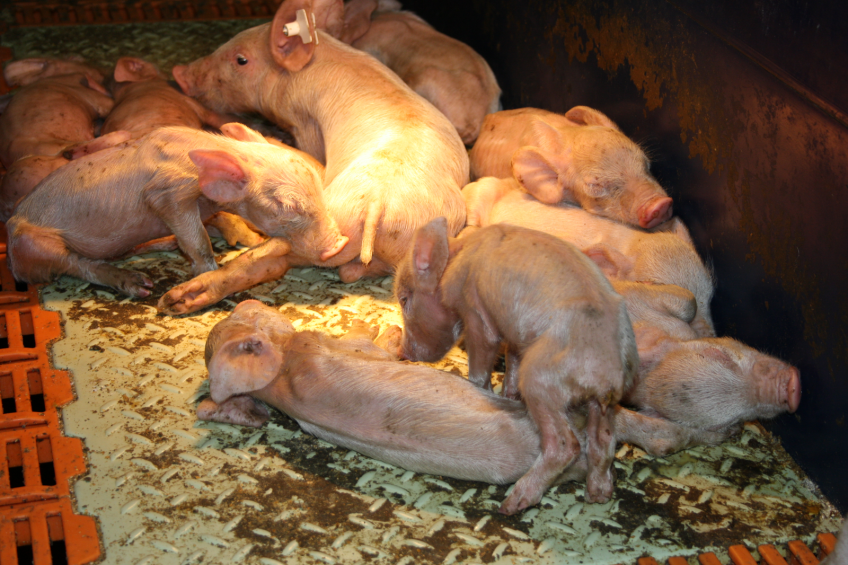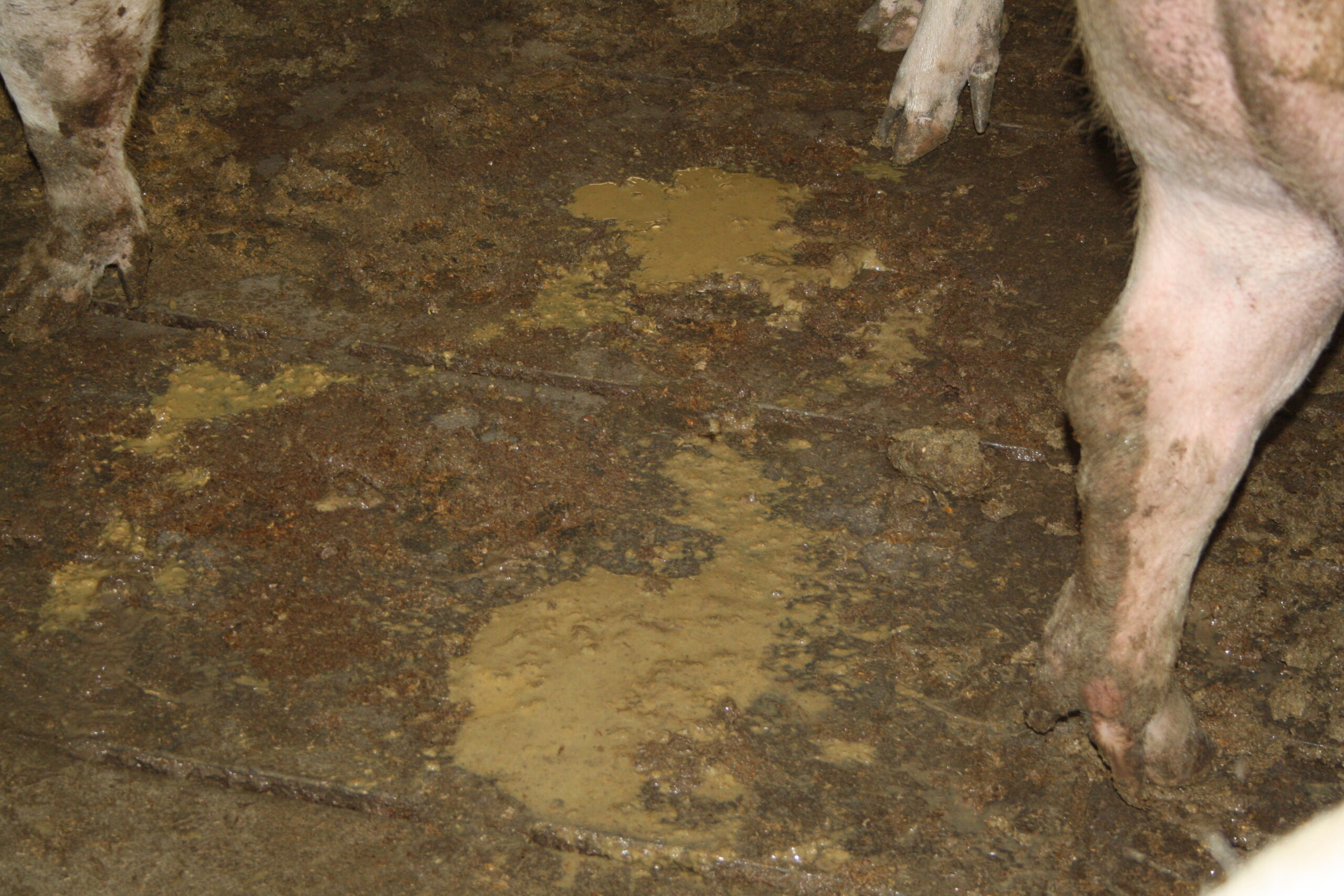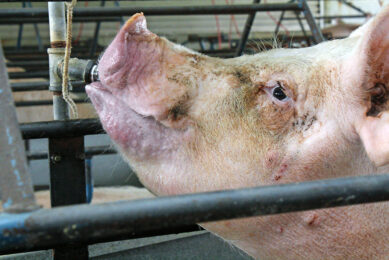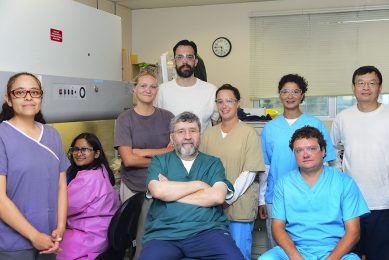PEDv: An intercontinental update

Porcine Epidemic Diarrhoea virus (PEDv) has proved to be devastating in herds in e.g. Asia and North America. Recent outbreaks of PEDv-like strains in Europe appear less destructive. How do all developments relate to each other on a global scale?
Porcine Epidemic Diarrhoea (PED) is an economically important enteric disease in pigs caused by a Coronavirus. Coronaviruses can be divided into the genera Alphacoronavirus, Betacoronavirus, Gammacoronavirus and Deltacoronavirus.
Alphacoronaviruses including Transmissible Gastroenteritis virus (TGEv), Porcine Respiratory Coronavirus (PRCv) and Porcine Epidemic Diarrhoea virus (PEDv) are the most important in swine. While TGEv and PRCv belong to the Alphacoronavirus 1 species, PEDv belongs to a separate species within the same genus.
While Betacoronaviruses induce severe diseases in humans like Severe Acute Respiratory Syndrome (SARS-Cov) or Middle East Respiratory Syndrome (MERS-Cov), the Betacoronavirus affecting pigs called Hemagglutinating Encephalomyelitis virus (HEv) is of minor importance for the swine industry.
Recently, Deltacoronavirus infections (porcine Deltacoronavirus, PDCov) were reported in pigs in Asia and North America which caused enteric diseases similar to PEDv but of lower clinical impact and disease severity.
PED first appeared as acute diarrhoea in finishing pigs in the early 1970s in the UK and subsequently spread fast across Europe causing acute outbreaks of diarrhoea in pigs of all age groups.
PEDv in Asia
While clinical disease in Europe was infrequent over the last decades, PED has emerged as a devastating enteric disease in Asia. The first confirmed case of PED in China occurred in 1973. Disease outbreaks caused by virus strains similar to those found in Europe during the 1970s and 1980s were described regularly in Asia since the 1980s. Until 2010, the prevalence of PEDv infection was rather low and disease outbreaks were reported sporadically.
Starting in 2010, a remarkable increase in PED outbreaks occurred due to the emergence of new virus strains which caused severe clinical disease and high losses in suckling piglets. Inactivated vaccines based on the classical European strain CV777 which were widely used in Asia were not able to fully protect uninfected herds from clinical disease after the introduction of those new PEDv strains.
PEDv in North America
For the first time, PEDv was introduced into the US in April 2013. First cases occurred in Ohio, Indiana, and Iowa and until now the disease has spread into 35 US states, Canada and Mexico. First detected US PEDv strains, also called prototype PEDv, were almost identical to PEDv isolates from China and research from North America suggested that introduced viruses likely originated in China’s Anhui province.
The exact route of PEDv introduction into the US could not be identified. A recent root cause investigation report from the US Department of Agriculture indicated that the use of Flexible Intermediate Bulk Containers (FIBC) could have been a possible scenario explaining the introduction and spread of PEDv and PDCov in the US.
Other US researchers suggested feed ingredients imported from China as a potential source for PEDv introduction since it could be demonstrated that the virus could survive in a subset of feed ingredients for an extended period of time using a model simulating shipment from China to the US.
In addition to prototype PEDv, PDCov and other strains of PEDv are currently circulating in the US. Some virus isolates were described in individual farms only while other strains showing deletions, insertions and several mutations within the S gene (prototype strain OH851) were detected regularly. Those isolates, called US S-INDEL PEDv, were assumed to be less virulent than US prototype PEDv strains.
While prototype PEDv isolates caused up to 100% mortality in suckling piglets up to seven days of age, mortality after US S-INDEL infection was described to reach around 30% in suckling piglets. On 5 June 2014 USDA issued a Federal Order requiring the reporting of swine enteric coronavirus diseases including PED and PDCov. Ever since the exact number of new cases is published by USDA in a weekly report. Detailed information on the PEDv situation in North America can be found on the different websites.

PEDv in Europe
After its first detection in Europe in the early 1970s, PEDv spread fast across Europe causing acute outbreaks of diarrhoea in pigs of all age groups. Over the last decades, however, clinical disease in Europe was infrequent. In contrast to individual areas within Europe like Northern Italy, most European countries did not observe problems caused by PEDv infections and therefore, the presence of the virus was not intensely investigated.
Since September 2014 however, several outbreaks of PEDv have been reported in Europe, which dated back to spring 2014. The first published report described acute outbreaks of PEDv in finisher herds in Northern Germany. Similar outbreaks were reported from other areas of Germany. While at the beginning, reports were limited to finisher sites, first outbreaks in sow herds were detected in autumn 2014. Disease outbreaks were not limited to Germany but were also reported from other European countries including for example the Netherlands, France, or Belgium.
At present, France and England are the only EU member states which made the disease notifiable. Therefore, no official numbers of affected herds within different countries are available.
Prevention and control of PED in North America
In North America, several methods have been applied so far to control PED virus on farms. The first two bullet points are not allowed in the European Union.
– Increasing sow immunity can be achieved by giving feedback. This usually involves feeding intestines or diarrheic faces from acutely infected piglets to sows to convey immunity. Different protocols are followed; no additives should be added.
– Weaning down is also a much applied strategy – this means weaning at about ten days of age.
– Improving biosecurity.
– Applying strict disinfection, e.g. using Synergize, Virkon S or Accel.
– Vaccinating. There are two inactivated vaccines available. The best success is usually achieved in pre-infected herds.
The clinical picture in most affected herds is mild compared to descriptions from the US or Asia. Most commonly, diarrhoea and reduced feed intake are observed in pigs of all age groups. Clinical signs usually wane within a few days to weeks and losses during outbreaks are insignificant. In individual sow farms however, high losses of suckling piglets were reported. For example, a piglet producing farm in southern Germany, which suffered an acute outbreak of PED in autumn 2014, experienced losses of 70% in suckling piglets of one farrowing batch. No co-infections with other known enteric pathogens were detected in that herd and gross and microscopic lesions in affected piglets were typical for PEDv. According to experiences in German sow herds, high losses occurred when suckling piglets which were not protected by maternal immunity got infected within the first week of life. In older piglets the disease was usually not fatal.
With the exception of Ukrainian PEDv strains, sequence analyses of recent PEDv strains found across Europe in 2014 and 2015 showed highest similarities with US S-INDEL PEDv isolates. A recent case report published by John Carr described the presence of highly virulent PEDv strains clustering with prototype US PEDv in Ukraine.
Routes of transmission
Routes of PEDv transmission between different areas, countries and even continents remain poorly understood. The origin of recently identified PEDv strains in Europe showing high nucleotide similarity to US S-INDEL PEDv strains remains unclear. It is not known if those strains have been circulating in the European pig population for a long time or if they were recently introduced into Europe.
Source: Pig Progress magazine. Volume 32.2 (2016)











